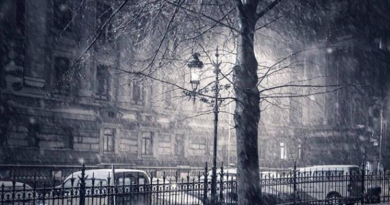Quartier Leopold protects Brussels
On Friday 1st of September, the Association Quartier Leopold organised a morning talk on the quite famous “European neighborhood” of Brussels. The association, born thirty years ago, aims at defending the interests of the inhabitants and businesses, in particular by promoting quality of urban life, renovation and protection of the habitat, mixed zones, green spaces and development of urban services and public structures.
The members of Quartier Leopold defend the above-mentioned European area -that includes Shuman, the Place du Luxembourg, Parc Leopold- and its urban and cultural structure: they want to protect the cultural heritage of this part of the city, preserving ancient and famous buildings; they want to reduce the levels of pollution and traffic, making the area more pleasant and, lastly, they want to stimulate the relationship between citizens and the city, making it more active, dynamic and engaged.
During the breefing, the Association’s members and the Deputy Mayor of the Ixelles commune presented the common goals of the meeting and stressed, in particular, two points: the imminent menace to the Wiertz Museum and the impact of the expansion of EU offices on the city. The Wiertz Museum, behind Parc Leopold, hosts a great collection of paintings donated by Antoine Wiertz, a famous Belgian painter -as well as sculptor and homme de lettres– from the Romantic period. Internationally famous for his audacity, and for the spectacular compositions, before dying the painter decided to leave all his works of art to the Belgian government, with the promise of exposing them for free for the population. The museum is set in the artist’s old studio and home, although now partially closed. The committee of Quartier Leopold is fighting to keep the museum open and free and, in particular, it is trying to avoid a future annexation of the building to the list of EU offices. The museum, in fact, has tickled the curiosity and interest of the European Parliament, who tried to acquire it for a derisory amount of money, to renovate it and use it as a conference and meeting centre. The citizens, and the association, found out about the deal through a newspaper article and wrote a letter to block the transition, to protect the museum and the last will of Wiertz. “The risks of allowing such an agreement are several: the citizens would witness a privatization or even the end of the museum: they would lose access to art and to a piece of their cultural heritage. Moreover, with the presence of members of the Parliament or important representatives of the EU, the securitization of the park would impede an easy access to it and would make sharing the common space more difficult”, said one of the Association Quartier Leopold members, Paul Jamoulle.
This important observation has been then correlated to the second major topic exposed by the members of Quartier Leopold: the impact of new EU offices on the city. The securitization of the offices (which means controls, cameras, security and police or military forces patrolling the area) slows down the neighborhood, since it blocks certain streets and deviates the traffic to secondary roads, more distant from the city and not equipped for being overused. The results are disastrous: it takes more time to reach the city or just cross the area; there are less parking spots; cars wait and move around more, creating more pollution in the air, and people have limited or no access to the area. Extending the area of EU offices means, therefore, further extending and enhancing these problems, making the European neighborhood less welcoming and attractive.
The Association Quartier Leopold is trying to keep and enhance contacts between common citizens and EU institutions, to open a dialogue on the urban environment and on how to protect it. The development of a city is not related only to the construction of new means and building: it is often visible through the protection and restoration of ancient buildings, the accessibility to cultural heritage, the creation of common public space, and, finally, through the permeability of the city to its citizens. The future urban plans of the European neighborhood should consider leaving more space and opportunity to the people, instead of closing itself to visitors and improvements to build more infrastructures.



